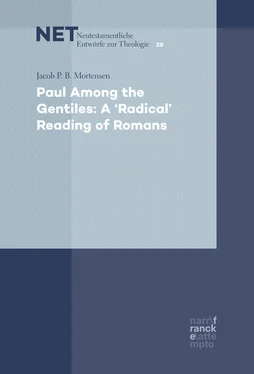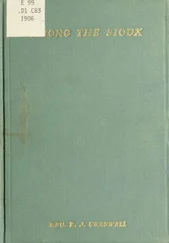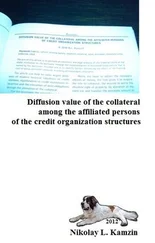An important disclosure must be made and emphasized in the current delicate discussion of positions and viewpoints. I am not attempting a specific historical reconstruction of the Roman assembly. I do not go into detail about the possible presence of Jews in Rome at the time of the letter, or the effect of Claudius’s edict. I am concerned simply with the text-internal information of the letter, and combine this with a reading of Romans, set against the background of the new perspective and the radical new perspective on Paul.
This book intends to offer an interpretation of the unity, coherence, and progression of the epistolary discourse on the surface level of the letter. Many scholars have provided impressive and intriguing interpretations of Romans, but few have managed to link together all the separate parts of Romans as a coherent whole. Two important examples of such work, by which I have been very influenced, deserve mention here. One is Troels Engberg-Pedersen’s Paul and the Stoics (2000). Throughout the chapters on Romans, Engberg-Pedersen strives to incorporate all the different parts of Romans into one coherent and unified whole. However, he succeeds only by assuming that the letter has an internal logic. Hence, Engberg-Pedersen’s interpretation does not unfold, from the beginning to the end of the letter, as a natural and logical development of the rhetorical strategy of the letter. Stanley Stowers’ work ( A Rereading of Romans , 1994) does accomplish this. However, Stowers wavers on the identity of the interlocutor in chapter 2 of Romans, and finds two separate interlocutors in chapter 2. Hence, Stowers does proceed on the surface level of the letter from beginning to end, but switches the identity of the interlocutor from chapter to chapter, making the dialogue in the letter somewhat difficult to follow. In this book, I have tried to provide a simpler and more consistent interpretation, which proceeds from beginning to end, sticks to one interlocutor throughout chapters 2 to 11, and attempts to incorporate all the different parts of Romans into one coherent and unified whole. I hope and intend that the reading of Romans proposed here will be useful, and prompt fruitful, scholarly debates within Pauline circles.
1 The State of the Research – the radical new perspective
Introduction
My intent with this chapter is to consider a few representative positions of scholars who either explicitly or implicitly have worked to push the new perspective on Paul further.1 It almost goes without saying that the ‘radical’ new perspective on Paul extends and further elaborates on the ‘new’ perspective on Paul.2 However, as this ongoing process of refinement continues, the necessity of drawing further conclusions and mapping out new positions develop. Consequently, many of the scholars calling themselves ‘radicals’ find it necessary to bespeak the emergence of a new paradigm.3 Although I find the defining of a new paradigm questionable at this point, this introductory chapter serves the purpose of mapping out those fundamental paths that may have the potential to make the new perspective on Paul implode, and dissolve into something ‘radically’ other.
To my knowledge, only two scholars have tried to explain the development from the new perspective to the radical new perspective. The first scholar is John Gager, with his book, Reinventing Paul (2000), the second is Magnus Zetterholm, with his book, Approaches to Paul (2009). Both scholars describe themselves as belonging to the newest development in Pauline studies. Gager presents himself as part of the ‘New Views of Paul’, as differentiated from ‘The Traditional View of Paul’ (Gager 2000, v). When Gager wrote his book, the new perspective was still thriving, and many scholars connected to the impetus from this kind of research. In the years following the publication of his book, the radical perspective materialized more and more, and scholars began to distance themselves more specifically from the new perspective and, instead, to speak of a radical new perspective. So even if Gager fits best within the radical perspective, he ‘merely’ presents himself as a scholar holding the ‘New Views of Paul’.
Gager and Zetterholm stage the history of research on Paul in the same way: They present the research on Paul as moving from a ‘traditional’ view to a ‘New Perspective’, or even ‘Beyond the New Perspective’. Gager labels the ‘old’ view from which he distances himself ‘The Traditional View’. He organizes his study thematically, under headings such as, ‘Paul Converted from Judaism to Christianity’, ‘Paul Preached against the Law and Israel’, and ‘Generalizing and Universalizing’. Hence, Gager mentions few scholars, and he describes the ‘traditional’ view ( i.e. all scholarship before his own) in broader terms, as though they all agreed on the points he presents. Zetterholm sets about his task slightly differently. He reviews the actual work of many different scholars and their specific books under three headings: ‘The Formation of the Standard View of Paul’, ‘Toward a New Perspective on Paul’, and ‘Beyond the New Perspective’. So the ways in which Gager and Zetterholm planned their presentations are similar: From something ‘old’, ‘traditional’, or ‘standard’, to something ‘new’ or ‘beyond the new’. But Gager approached this task from a thematic perspective, whereas Zetterholm approached it from the perspective of individual scholars.
The one thing lacking in both Gager’s and Zetterholm’s presentations is a critical view of their own radical positions or perspectives. This may be too much to ask of a scholar deeply involved in developing a new position. However, some sort of critical evaluation still needs to be presented. The only one of which I am aware is Terence L. Donaldson’s, in a book edited by Mark Nanos and Magnus Zetterholm, Paul within Judaism (2015).1 There is another critique, by Alexander Wedderburn, but this is more a critique of the new, rather than the radical new, perspective. However, I present some of the objections raised by Donaldson and Wedderburn, after a presentation of the ‘radicals’, and I also present some critical remarks of my own.
Scholarly predecessors to the radical perspective
Franz Mussner, Krister Stendahl, John Gager
Franz Mussner was a Catholic New Testament scholar teaching at the University of Trier and Regensburg from 1952/53 to 1981. During the course of his teaching he came to the conclusion that a proper perception of Judaism was a key to understanding the New Testament texts. He also actively engaged in Jewish-Christian dialogues in the years following the Second World War. Franz Mussner is a predecessor to the radical perspective, arguing for a Sonderweg interpretation of Rom 11:25–27. Some scholars argue that the Sonderweg interpretation may also be designated a ‘two covenant’ theology.1 The reason for this is to be found in the emphasis on the continued legitimacy of Israel’s covenant with God after the coming of Christ, and, hence, a positive evaluation of Judaism. Rom 11:25–27 states that ‘a hardening has come upon part of Israel, until the fullness of Gentiles has come in, and then [or in that way] all Israel will be saved. As it is written: Out of Zion will come the deliverer’. The Sonderweg interpretation more specifically argues that Israel will not be saved until the Second Coming of Christ. When Israel observes the Messiah descending to earth and hears the gospel proclaimed, she will respond to Christ and be converted.
Some scholars confuse the precise meaning of the Sonderweg by viewing the term as encompassing almost any distinction between the salvation of Israel and the salvation of believers in Christ.2 But there are at least two approaches to God’s salvation of Israel. The ‘two covenant’ solution maintains that Israel’s salvation bypasses Christ altogether. Scholars such as Krister Stendahl, John Gager, and Lloyd Gaston may be said to adopt this position.3 The other position works with a narrower definition of the Sonderweg solution, and argues that Jews will be saved through faith in Christ. However, this faith is engendered by the Second Coming of Christ, when he preaches the gospel to Israel on the final day. According to this interpretation, those who believe in Christ are saved in the ‘regular way’ (by believing in Christ), whereas Israel will be saved through a ‘special way’, a Sonderweg . Franz Mussner argues for this specific interpretation. Mussner also argues from the ‘conversion’ of Paul as a parallel to the conversion of Israel:4 Just as Paul became a Christian when Christ revealed himself to him on the road to Damascus, so all Israel will be saved when Christ reveals himself to Israel as the Messiah in his Second Coming on the final day. By arguing in this way, Mussner’s perception of Paul may be said to represent a ‘traditional’ Christian (Catholic) perception of Paul, but he has incorporated into this perception a positive presentation of Judaism and the salvation of Israel. Additionally, his post-Holocaust interest in Jewish–Christian dialogue may be said to be present in his interpretation of Paul, since Israel holds a special position, and has its own path to salvation. His idea that Israel holds a special position with regard to salvation, in Rom 9 to 11, makes it a predecessor to the radical perspective.
Читать дальше












